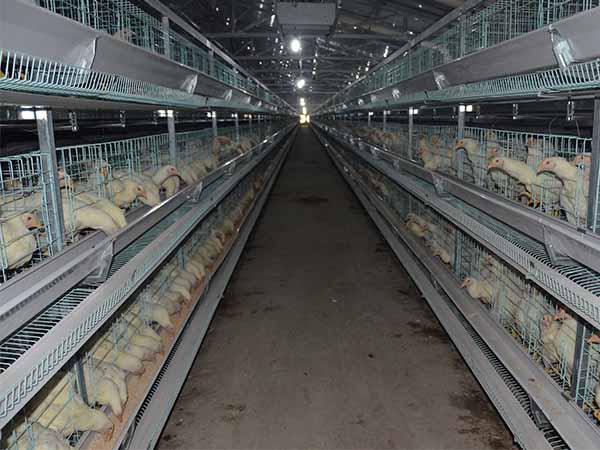Why buy high-quality broiler cage equipment?
Broiler cage equipment and caged chicken equipment are directly related to the efficiency of the farmers. Many chicken farmers' brooding, rearing and layer houses are out of proportion. And they do not meet the requirements. The rearing area is often too small, the rearing density is too large, and the feed and drinking troughs are not enough. It can be said that this is a common problem common to chicken farmers, and it is also one of the important factors affecting the economic benefits of laying hens. There are also chicken farmers who raise more chickens, use fewer houses or have no extra houses for chickens. Putting the chicks into cages prematurely is unfavorable to the growth and development of the young and will eventually affect the laying performance of the hens. For laying hens, the harvest is after the hens start to produce.
The equipment for raising chickens is inferior and mismatched. The equipment for raising chicks, brooding chickens and laying hens has specifications and ratio requirements. The equipment should be matched to facilitate the normal growth and development of the chicken group and reasonable turnover, and give full play to the utilization and operation rate of the equipment, so that the depreciation expenses allocated to each hen or each kilogram of eggs can be more reasonable, thereby reducing Cost of production.

Nowadays, laying hens are mostly raised in cages, and chicken cages are indispensable equipment, and chicken farmers generally pay more attention to it. However, they lack the ability to discern the quality of chicken coops, and tend to be low-priced when they are purchased. Cage is a place for hens to live, produce and sleep. Its quality cannot be ignored. The quality of the bottom of the cage, the width and slope of the cage are especially important. Another common problem worth noting is that chickens are not installed in cages. When the brood survival rate is high, the number of surviving hens exceeds the budgeted transfer number, or the hens that are too light are reluctant to eliminate hens that are too light. In this case, they are often overloaded. According to statistics, when the number of hens per cage increased to 5, 22.5% of the hens died before 305 days of age. According to the production report statistics accumulated by the author over the years, the egg production rate of chicken flocks whose cage density exceeds the prescribed standard is 5% to 15% lower than that of normal chicken flocks.
Therefore, the purchase agency can not only talk about cheapness, but needs to consider quality first
